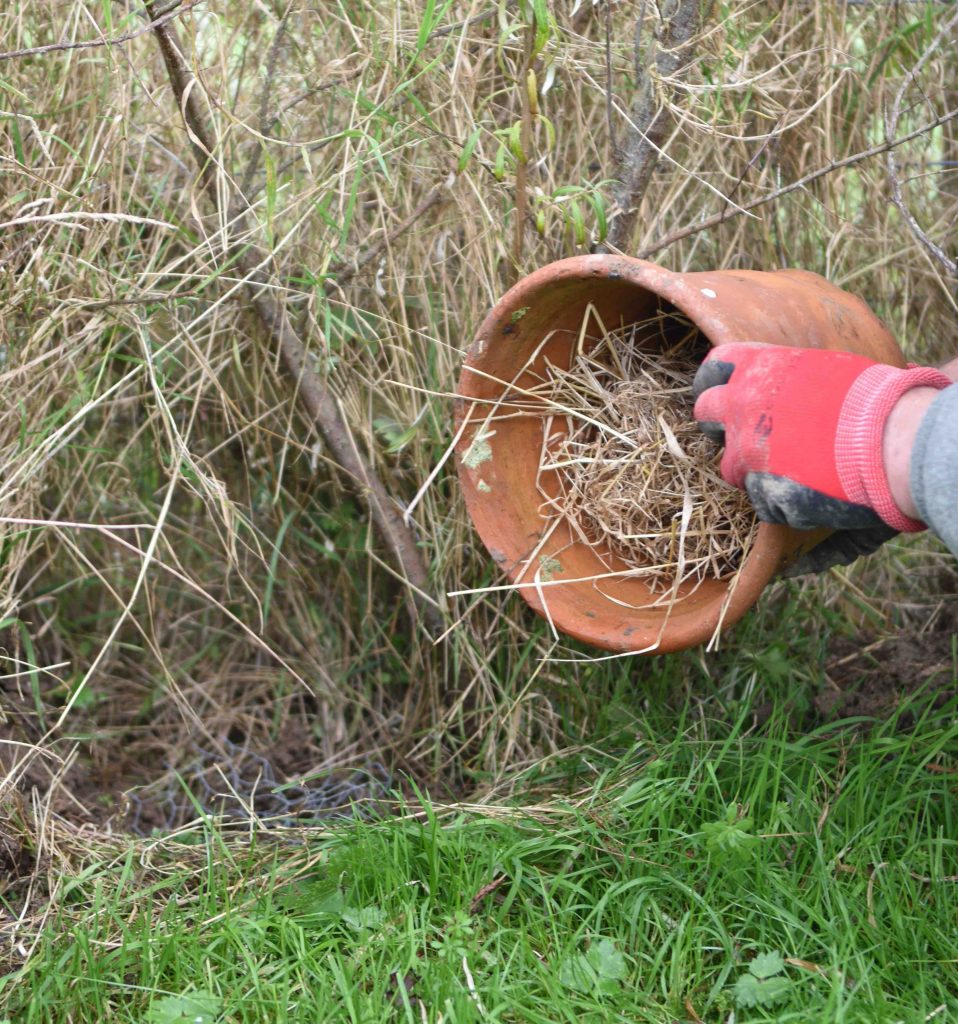
It was wonderful to be at Nags Hall Garden Centre yesterday and Friday evening, meeting so many people. A lot has changed since my days there! It was exciting to see how the place has grown.
The run-up to Christmas, in my days there, was always an exciting time but the things I remember most was collecting moss for the holly wreaths. The best moss always grew among the stems of the huge nettle patches and my hands would be tortured by the frost and stings. And then there was the basic wreaths to make, with holly from the woods, another painful job, before taking them to Joan in the floristry department to add the finishing touches!
But enough reminiscing, now I am am back home there is work to be done. I confess it was a slow start this morning but, among recent jobs I have been doing this week are:
Digging out a bean trench. Beans, especially runner beans, need constant moisture when they are growing and prefer a soil packed with organic matter. A traditional way to supply this is to dig out a bean trench. This is dug out now and over winter kitchen waste, fallen leaves and even manure is added and it is covered over in spring, in good time to plant the beans in May. Always add a little garden lime to the green waste before covering because all beans and peas like lime in the soil. It is also a good way to improve the growth of sweet peas.

Raise pots off the patio. To help prevent waterlogging of the compost in patio pots it pays to raise the pots on pot feet. You can buy these (they make a great stocking filler gift for a gardener) or you can use pieces of broken paving or small bricks.

Protect plants in pots from cold. Frost can damage not only your patio pots but the plants in them. As compost expands, as it freezes, it can crack ceramic pots. You can help prevent this by wrapping with bubble plastic. Do not cover the plants though or they will rot. Even better, line the pot with bubble plastic on the inside before you plant.
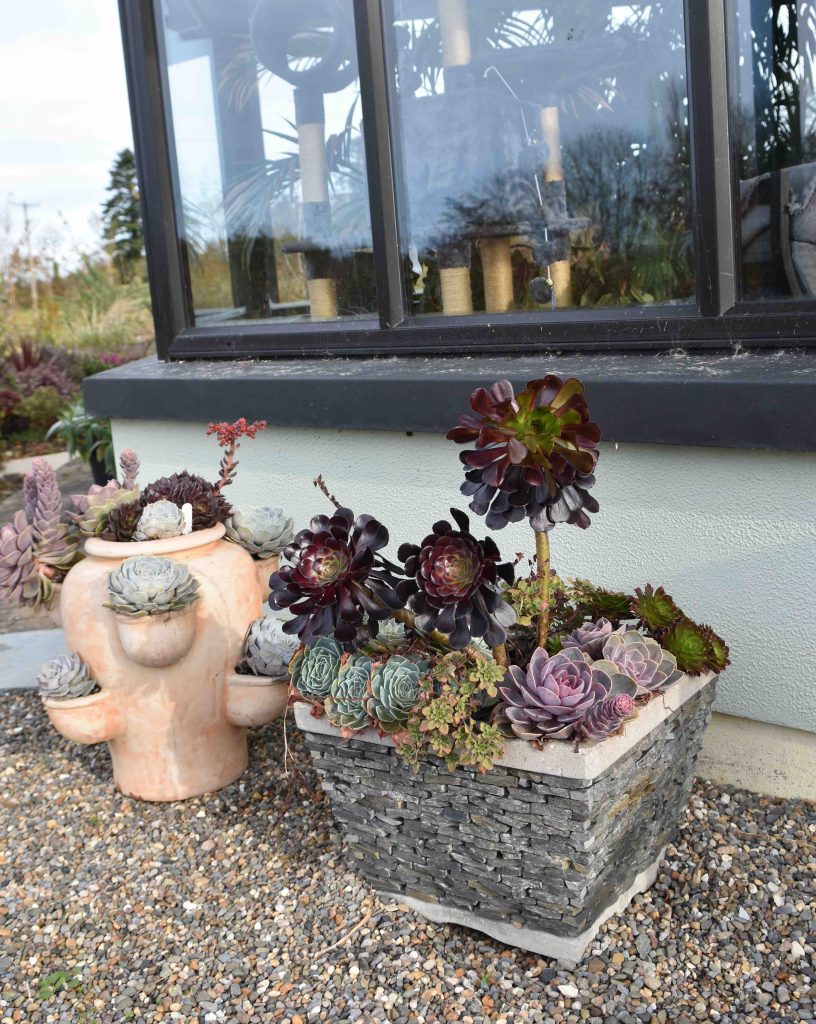
Protect tender plants. You can also help protect tender plants by moving them close to the house, ideally under the eaves. It helps to keep them dry and reduces frost damage. If you have a cold greenhouse, that is even better.
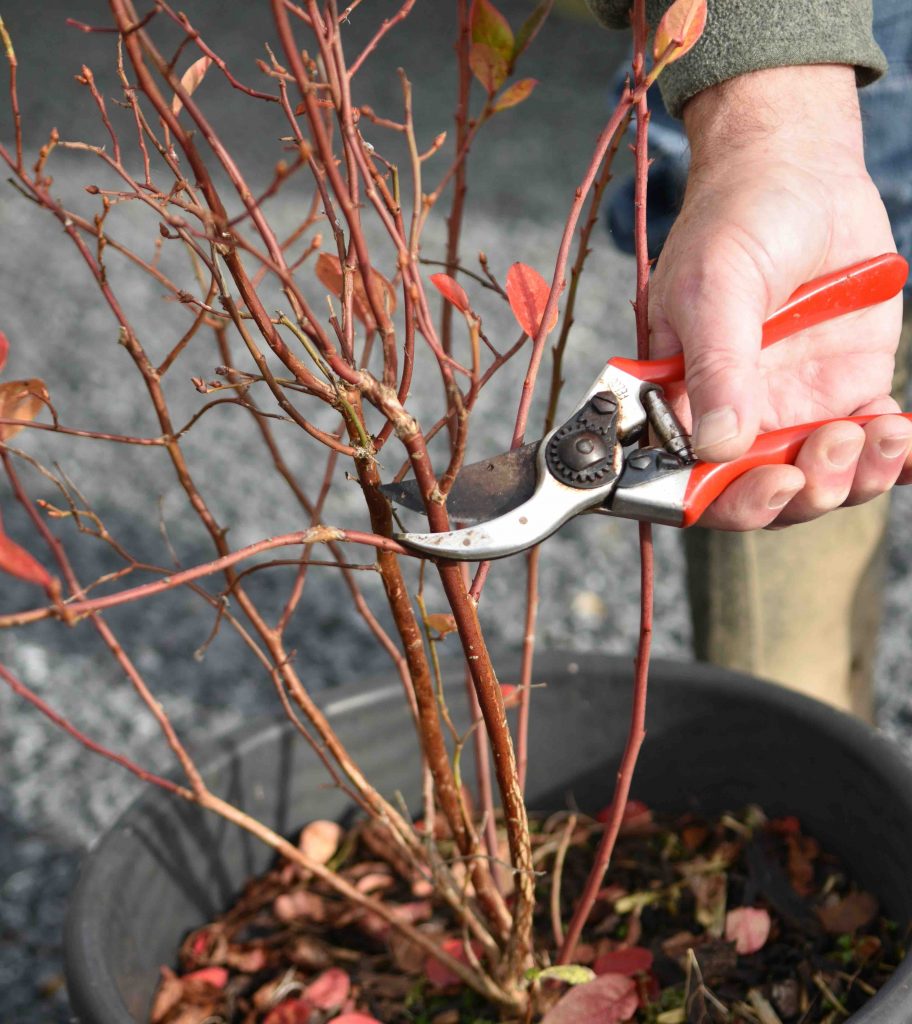
Prune blueberries. Blueberries do not need formal pruning but they often benefit from a prune in winter. Old, twiggy stems, that is often grey rather than red and green, is not very productive and these can be cut away to make space for the new growth, Thin out the growth rather than prune hard or you will not get berries next year.

Protect agapanthus. Evergreen agapanthus, with broad leaves and the largest flower heads, are less hardy than the deciduous kinds. I protect them from the severest frost by loosely covering them with bracken. You can use straw or fleece but make sure you allow air to the plant. Frost does damage the thick foliage but the bracken helps protect the crowns and the plants do well.
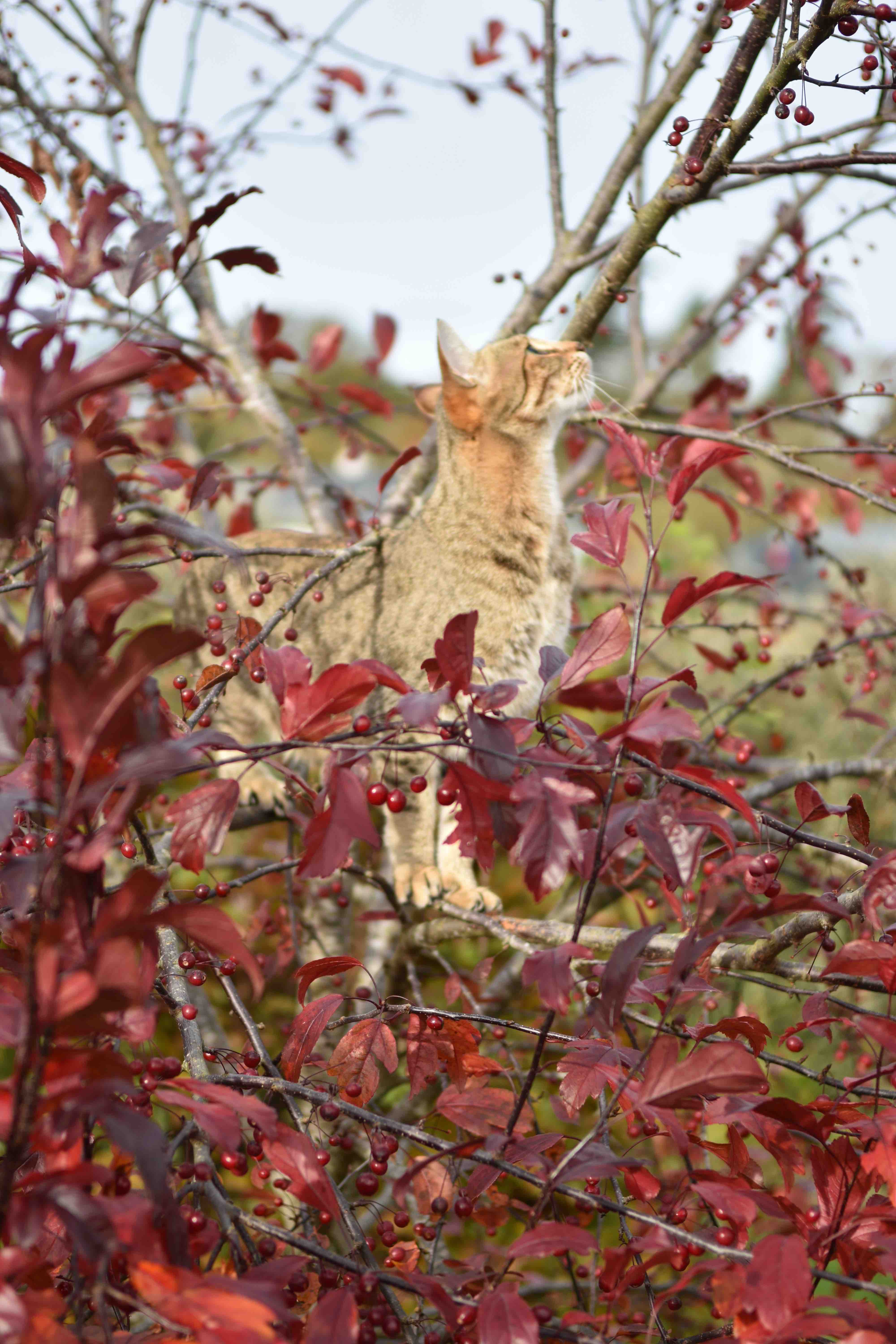
Plant a tree. It is always said that crab apples are just about the best of all trees for small gardens. I won’t argue with that but, rather than the more usual kinds, the star of my garden right now (well ‘stars’ since I planted a matching pair) is Malus toringo ‘Freya’. It has purple leaves, profuse deep pink flowers and an abundance of tiny red ‘apples’. The birds love the small fruits and the bees crowd the spring blossom. Mia (the cat) likes the trees too.
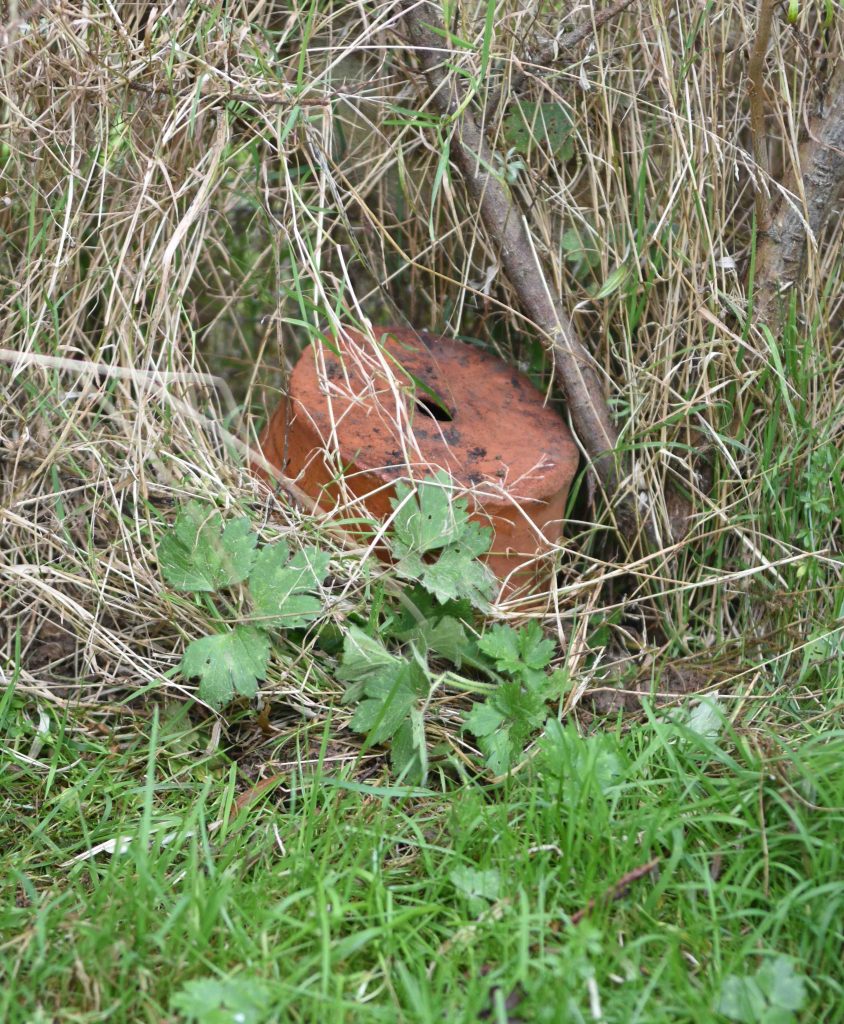
Make a Bee house. I am slightly obsessed about bees and I am lucky that I have an old earth bank, which is home to mice and various small rodents, that provides potential homes to bumble bees – bumble bees like to make their homes in old mouse nests more than anywhere else! They can even sniff out the smell of the mice!
But I want to do all I can to encourage bees so I converted an old terracotta pot into a home for them. A shady place, at the foot of a hedge is ideal. There are various ways to make them but the simplest is this way. Dig out a slight hole and put some layers of chicken wire at the base to keep the potential nest raised and dry. Then put some dry moss and/or hay in the pot and place this over the hole. Placing it at a slight angle will help keep out rain. Replace the soil around the outside of the base to steady the pot and insulate it. You can add a tile on top of the pot, propped up one side, to allow access but to keep the nest dry.
